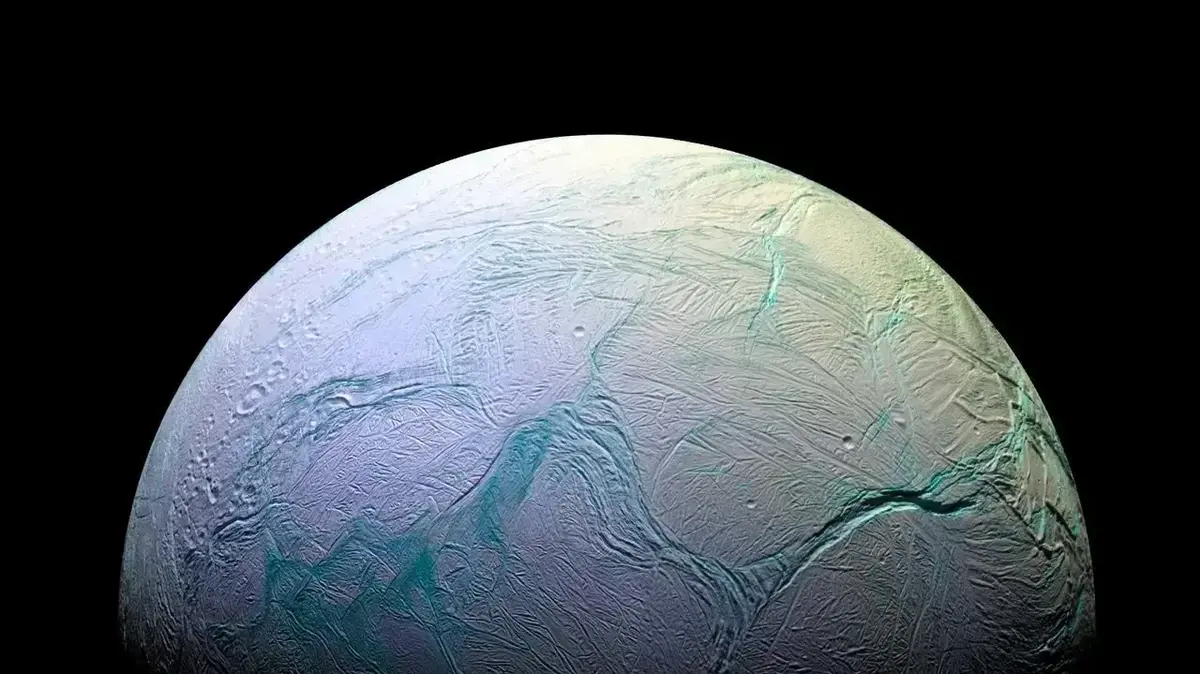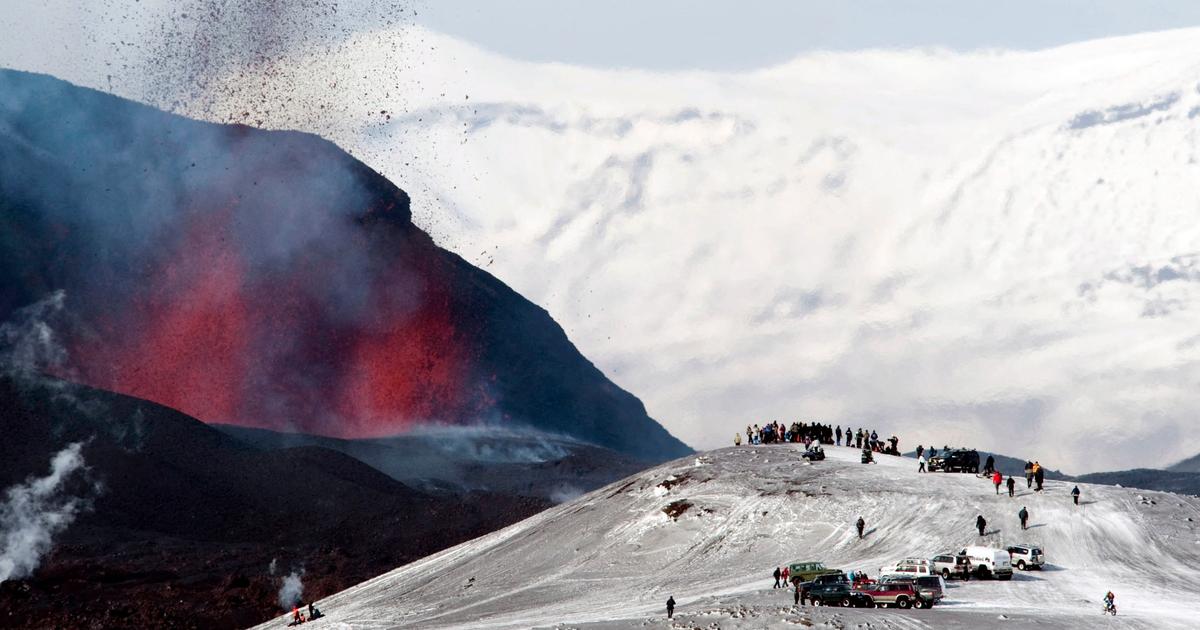In 1979, Rosaly Lopes saw a jet of molten rock rise more than 15 meters above the black peak of Mount Etna in Italy, which had just erupted.
It was the first time that this Brazilian astronomy student, born in Rio de Janiero 57 years ago, visited a volcano, and since then she has hardly done anything else.
Lopes has explored more than 50 active craters on all continents, including the icy Mount Erebus in Antarctica.
In 1989 he began working on the science team for the
Galileo
space probe , launched by NASA to explore Jupiter and its moons.
The astronomer concentrated her efforts on Io, where years before the
Voyager
probe had discovered a lava lake 200 kilometers in diameter, the largest active volcano in the entire solar system.
Lopes was in charge of analyzing the infrared images sent by
Galileo
, which revealed the presence of heat on the surface, and thus she discovered 71 living craters completely new to science.
In 2006, the Guinness Book of Records recognized her as the person who discovered the most volcanoes on Io and anywhere else in the solar system, including Earth.
Lopes has been working at the Jet Propulsion Laboratory for 32 years, where NASA devises the most ambitious robotic missions to explore other planets and moons in the solar system.
Visiting Spain to teach a summer course at the Menéndez Pelayo International University in Santander, in this interview he explains the new space missions that will seek life in places that are impossible for any human to reach, for now: from the bed of ancient rivers from Mars to the subterranean oceans of Titan, Saturn's largest moon.
Ask.
What connection is there between volcanoes and life on other planets?
Response.
Heat is one of the fundamental ingredients for life.
It is a source of energy.
If there are volcanoes, it is more likely that something alive also exists;
even after the activity is over.
After the Galileo
mission
I joined the
Cassini team
, which was going to explore Saturn.
It was a probe in which NASA and the European Space Agency collaborated.
I took care of studying Titan.
This satellite is covered in a crust of ice, but underneath there is an ocean of liquid water.
The same is true of other moons in the solar system, such as Europa and Enceladus.
On Titan you have liquid water and heat.
We found no active volcanoes, but there were in the past.
In addition, there are many organic compounds, hydrocarbons of carbon and hydrogen that could have been the pillar for the appearance of living beings.
Q.
Can there be life on this moon today?
R.
Yes, of course, although we do not know.
It is possible that there was in the past and not anymore.
The same goes for Mars.
What is certain is that the conditions for life to arise are present.
So the most likely places to find extraterrestrial life are Titan, Enceladus, Europa and Mars.
These moons are ocean worlds and we may find life on them.
Now we hope that for the first time in history we will be able to bring samples of Martian soil and rocks back to Earth.
In them we can find evidence that at some point there were living organisms there.
Q.
When do you expect those samples to arrive on Earth?
R.
It is a very complex and expensive mission in which the US and Europe collaborate.
There is no exact date, but I would say early in the next decade.
These samples have been taken in a land where there was water thousands of years ago.
They come from different soils where there may be traces of microbes.
It is possible that when they return there will be living things inside, although we thought there was probably life, but it disappeared.
But even if we only find a trace of past life, it will be the most important scientific discovery in a long time.
Q.
The moons of Jupiter and Saturn are much more difficult to explore than Mars.
How does NASA plan to do it?
A.
It is impossible to drill through miles of ice to the ocean.
This is where volcanoes help us.
On some of these moons there are cryovolcanoes.
In them, what comes to the surface is not molten rock, but liquid water mixed with material from the ocean floor.
The most feasible thing is to go to Enceladus because there are active geysers there that spit plumes of steam and underwater material.
If you can get a lander there you could take samples.
There may be traces of life.
It is very complicated because we cannot send a huge ship with a large laboratory.
There's a big weight limitation, but maybe in the future we'll be able to bring samples back to Earth from there.
NASA astronomer Rosaly Lopes, on the Marum volcano, on the island of Vanuatu.RL
Q.
NASA is going to send a mission to Europe.
R.
Yes, the objective of this spacecraft, called Europa Clipper, is to study the habitability conditions of this moon of Jupiter.
You'll be looking for plumes there too, but they're more unpredictable here.
Also, Europe is a killer environment for ships.
Jupiter emits an enormous amount of radiation that would annihilate any ship on the surface of its moon in less than a month.
The scientific community has just published a report saying that it is better to go to Enceladus, because there is no radiation there.
We also know where the geysers are.
And our probe could be there for months, even years.
Q.
Are there any missions already planned for Enceladus?
R.
Not yet, but projects.
One of them is the
Orbilander,
which includes an orbital probe and a lander.
It's just a proposal, but the panel of the US Academy of Sciences that I mentioned supported these types of missions.
Q.
And is Titan going to be explored?
A.
Yes, there is a planned mission:
Dragonfly
.
It is a drone with four rotors that will land on this moon and analyze soil samples.
It will be equipped with instruments capable of detecting biomarkers;
traces of life
Titan is very interesting because it is quite easy to land there.
He has a denser atmosphere than Earth.
There was a European spacecraft,
Huygens
, that landed there in January 2005 and was able to send back some images.
Dragonfly
It will be the first ship that can go to take samples in different places.
We will launch it at the end of this decade, possibly in 2028. There has to be a surface layer on top of the ice made of these compounds, we don't know how thick it is.
We think that life on Titan probably arose in the ocean.
Apart from volcanoes, one way to bring material from the bottom to the surface is when there is an asteroid impact capable of breaking the crust, which can be up to 100 kilometers thick.
The mission is going to land right next to an old impact crater.
I don't think there's anything alive left out there, but maybe there are biomarkers left.
Q.
Do you believe that there is life elsewhere in the solar system or beyond?
R.
It is a very difficult question.
There are probably planets very similar to ours, but on the other hand, we don't know exactly how life on Earth arose.
We also do not know if it is an easy and usual process or complicated and rare.
That's why it's so important to look for life elsewhere in the solar system.
It is impossible to make statistics with a sample of one.
If we suddenly discover that life evolved on Mars or Enceladus, we will already have a sample greater than one, because at the moment we only know that there is life on Earth.
Q.
There is a big gap between finding a biomarker and finding a living organism.
How far are we from the latter?
R.
I think that the necessary technology is already ready.
If there are live or dead microbes in the samples we bring back from Mars, we will find them.
The most complicated thing is to know if we are looking in the right place.
The planets are big.
Even being in the right place, we may not be able to dig deep enough to get to where there are living things.
In any case, it is a fundamental question to understand ourselves.
You can follow
MATERIA
on
,
and
, or sign up here to receive
our weekly newsletter
.
50% off
Exclusive content for subscribers
read without limits
subscribe
I'm already a subscriber








/cloudfront-eu-central-1.images.arcpublishing.com/prisa/G7CUGFSSVJCUFFL6Q5HHVTTC4Y.jpg)
